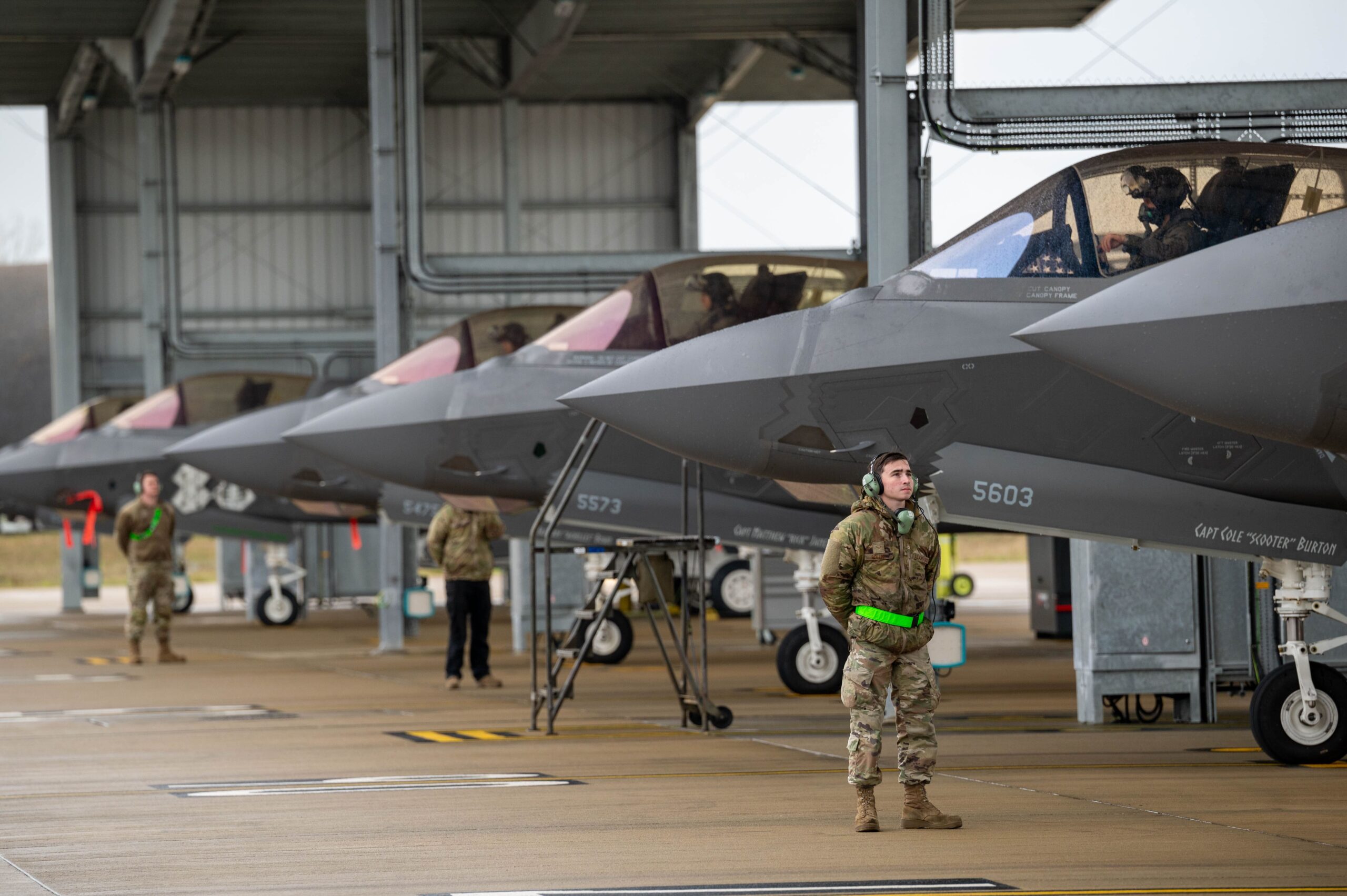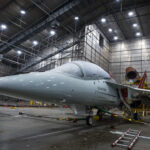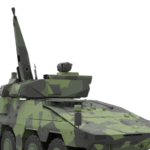The United Kingdom confirmed it will acquire at least twelve F-35A Lightning II fighters, adding a land-based nuclear mission to the Royal Air Force for the first time since 1998. Defense officials confirm the jets will form part of NATO’s Dual-Capable Aircraft program, which keeps U.S.-owned B61-12 bombs under shared control.
According to industry sources, London will convert an equal number of previously planned F-35B orders, holding the overall target of 138 stealth fighters across the program’s life. The change saves about 25 percent per aircraft because the A model costs less to build and support than the vertical-landing B variant.
UK Purchase of F-35A Fighter Jets Boosts NATO Nuclear Capability
Prime Minister Keir Starmer announced the decision at this week’s NATO summit in The Hague. He called it “the biggest strengthening of the UK’s nuclear posture in a generation,” underscoring a broader strategy that pairs modern equipment with visible alliance commitments.
The F-35A became the only Western fighter formally certified last year for the B61-12 after formal certification.. Defense officials confirm the UK aircraft will meet those standards before entering frontline duty. Certification drives early integration work at RAF Marham, the future home base for the new squadron.
Government planners outline a delivery window that starts in 2028 and closes in 2031. Procurement contracts are expected to follow the long-standing “Block Buy” model already used by the Joint Program Office. A sustained production line allows Lockheed Martin to slot UK jets without altering overall throughput, minimizing risk to the industrial schedule. Long-lead items for the first four airframes are already in the ordering cycle.
Nuclear-Capable Aircraft: Strategic Shift in RAF Posture
Starmer’s cabinet argues that the A model offers three advantages over buying more Bs. First, the aircraft carries more internal fuel, giving longer unrefueled range for deep-strike profiles. Second, it uses simpler landing gear, reducing upkeep. Third, it fits NATO’s existing nuclear infrastructure, avoiding expensive shipboard modifications. It shortens the path toward operational status by at least eighteen months compared with adapting the F-35B for the same role.
The Royal Navy’s carrier air wing will keep the short-takeoff B model. Officials state there is no plan to mix variants on Queen Elizabeth-class decks. The decision confines nuclear capability to land bases, reflecting alliance doctrine that stores tactical bombs at selected European sites. Defense officials confirm the United States will retain custody of warheads, in line with existing NATO practice.
RAF Marham Expansion to Support NATO Nuclear Standards
RAF Marham already hosts the UK’s F-35B fleet and most of its support equipment. Hangars, weapons storage igloos, and security zones will expand to meet stricter nuclear standards. Construction begins in early 2026 under a fast-track infrastructure contract that uses modular hardened shelters.
The switch to F-35A raises training demands. Pilots qualified on the B variant face a brief conversion – mostly new emergency procedures and landing techniques. However, ground crews must learn arresting-hook handling, wing-tip jack points, and standard runway operations that differ from carrier decks. The Lightning Conversion Unit at RAF Valley will add a dedicated A-model syllabus in 2027.
B61-12 Bomb Integration and Certification Timeline
The nuclear mission itself rests on three pillars: warhead handling, strike certification, and secure command links. The UK plans to borrow established procedures from Germany, Italy, the Netherlands, Belgium, and the United States, reducing paperwork. An MoD working group will review base security, munitions transport, and custody agreements by mid-2026. Officials stress that no bombs move to UK soil until every checklist item passes NATO inspection.
Here’s why London chose a mixed fleet:
- Takeoff method
- F-35A: conventional runway
- F-35B: short takeoff/vertical landing
- Internal fuel load
- A: about 18,250 lb
- B: about 13,500 lb
- Weapons bay size
- A: accommodates the 2,500-lb B61-12 without racks
- B: needs special adapters
- Maintenance man-hours per flight hour
- A: roughly 9
- B: roughly 12
- Unit flyaway cost (Lot 18)
- A: near $80 million
- B: near $106 million
UK Aerospace Industry Benefits from F-35A Integration
Industry managers describe the shift as a healthy signal for the UK supply chain. BAE Systems already builds the rear fuselage for every F-35, and Rolls-Royce supplies lift-fan gearboxes for the B model. New A-model work will focus on software, support equipment, and spares packaging rather than new hardware, but it still protects more than 300 engineering jobs tied to integration tasks.
Defense officials confirm funding comes from the 2025 Strategic Defence Review reserve. The MoD will re-phase other aviation projects to free near-term cash, but no cancellations are planned. According to industry sources, life-cycle costs for the A model run about £14 billion over thirty years, including munitions, training, and depot sustainment.
Critics question the need for an airborne nuclear role when the UK already fields Vanguard-class submarines armed with Trident II. Government strategy documents answer that the F-35A provides a flexible, visible deterrent that complements the covert sea-based force.
Airborne Deterrence as Complement to Trident Submarines
RAF weapons officers emphasize that dual-capable aircraft do not fly with live bombs during routine sorties. Nuclear munitions stay under tight guard, moving only for training or crisis alert under NATO command. The UK’s acceptance of B61-12 storage will require periodic compatibility checks, U.S. Air Force custodial teams, and joint security drills at Marham.
Future Combat Integration and Strategic Planning
The delivery schedule fits within the F-35 production plateau of 156 airframes a year. Lockheed’s Fort Worth assembly line remains on track after earlier delays tied to Technology Refresh 3 hardware. Defense officials confirm UK jets will carry TR-3 kits from day one, avoiding the block-upgrade retrofit now hitting early-build aircraft.
Mark Rutte, NATO’s incoming Secretary General, welcomed the news, calling it “yet another robust British contribution to NATO.” Military planners note that Denmark, Norway, Belgium, the Netherlands, and Italy will also field F-35As with nuclear capability, creating a common cockpit and logistics picture across northern Europe.
RAF logistics teams face immediate tasks:
- Reshape spares inventory to cover tire, brake, and arresting-hook assemblies unique to the A model.
- Expand weapons bunkers to accept American Type D vaults and environmental controls needed for B61 storage.
- Update communications networks to handle NATO-standard nuclear release messages with multi-layer encryption.
- Draft rapid deployment plans for moving jets to ally bases during exercises or crises.
The MoD has tendered concept studies for a hardened command post at Marham that merges base security, nuclear custodial control, and mission-planning cells in one facility. Early work suggests a sub-grade structure with fiber links to UK Strategic Command and NATO Air Command. Construction funding goes before Parliament later this year.
NATO Command Integration and Infrastructure Upgrade
Business planners inside the Lightning Force view the A model as an operational bridge to the Future Combat Air System, scheduled for the late 2030s. The stealth fighter’s open-architecture sensors and network pipes will feed test data to the Global Combat Air Program, shortening lead times for the next-generation manned platform.
Arms-control lawyers note the step aligns with the Treaty on the Non-Proliferation of Nuclear Weapons because the bombs remain under U.S. ownership until a wartime release order. The UK made similar arrangements when it hosted U.S. nuclear gravity bombs during the Cold War. Those weapons left British soil in 2006; their return marks a policy reversal but stays within treaty bounds.
Defense officials confirm that crews will conduct their first live-drop certification in the Nevada Test and Training Range in 2029, using inert B61-12 rounds. Follow-on trials bring live weapons to the Hebrides range under strict environmental and safety rules. Our analysis shows the full operational clearance date falls in 2030, nine years sooner than any UK-designed successor aircraft could match.
Deck Pressure Relief and RAF Refueling Plans
Sustainment projections rest on reaching 80 percent mission-capable rates, yet the global F-35 fleet averages nearer 55 percent. The MoD earmarks additional funds for spare engines and Diagnostics-Based Logistics upgrades. Lawmakers asked for quarterly progress reports on readiness benchmarks. However, some Pentagon evaluations note the jet still falls short in meeting certain performance and availability targets.
The purchase also frees carrier deck space. Switching twelve hull numbers from the B fleet to land basing removes pressure on Queen Elizabeth-class sortie generation. Fleet Air Arm planners can now schedule maintenance without disrupting strike-group deployment cycles.
Defense officials confirm that no decision has been made on an escort tanker fleet. The A model’s longer legs reduce the urgency, yet substantive reach still depends on Voyager aerial refuelers. Studies look at adding boom receivers to future tankers so a mixed basket-and-boom force can serve both Typhoon and Lightning II fleets.
Nuclear Security Infrastructure and Transatlantic Support Logistics
Security upgrades at Marham will draw on lessons from U.S. Air Force bases in Europe. The base will add double-fence perimeters, automated intrusion detection, and quick-reaction forces trained in nuclear surety. That work begins after site surveys this autumn and continues in phases through 2027.
Industry sources expect initial maintenance contracts to run through the UK-U.S. Lightning Sustainment Center at RAF Lakenheath, creating transatlantic economies of scale. Negotiations with Lockheed and Pratt & Whitney aim to lock in power-plant support pricing before the new jets arrive.
The Royal Air Force sees knowledge transfer as a two-way street. Flight test data on low-level penetration, terrain-following routes, and GPS-denied navigation will feed NATO’s tactical doctrine. The Lightning Community Conference, held each spring, will provide the forum for sharing those insights across allied air forces.
REFERENCE SOURCES
- https://www.theguardian.com/politics/2025/jun/24/uk-to-expand-nuclear-deterrent-with-us-fighter-jets-capable-of-carrying-warheads
- https://www.gov.uk/government/news/uk-to-purchase-f-35as-and-join-nato-nuclear-mission-as-government-steps-up-national-security-and-delivers-defence-dividend
- https://www.reuters.com/business/aerospace-defense/uk-purchase-fighter-jets-capable-carrying-tactical-nuclear-weapons-2025-06-24/
- https://breakingdefense.com/2024/03/exclusive-f-35a-officially-certified-to-carry-nuclear-bomb/
- https://www.businessinsider.com/uk-nuclear-bombs-air-force-buying-f35a-cold-war-2025-6
- https://breakingdefense.com/2025/06/uk-to-buy-at-least-a-dozen-f-35as-join-natos-nuclear-mission/
- https://www.forces.net/services/raf/marham-host-rafs-new-nuclear-capable-fleet-f-35as-announced-starmer
- https://armyrecognition.com/news/aerospace-news/2025/breaking-news-uk-restores-nuclear-air-force-capability-with-purchase-of-12-new-us-f-35a-stealth-fighters


